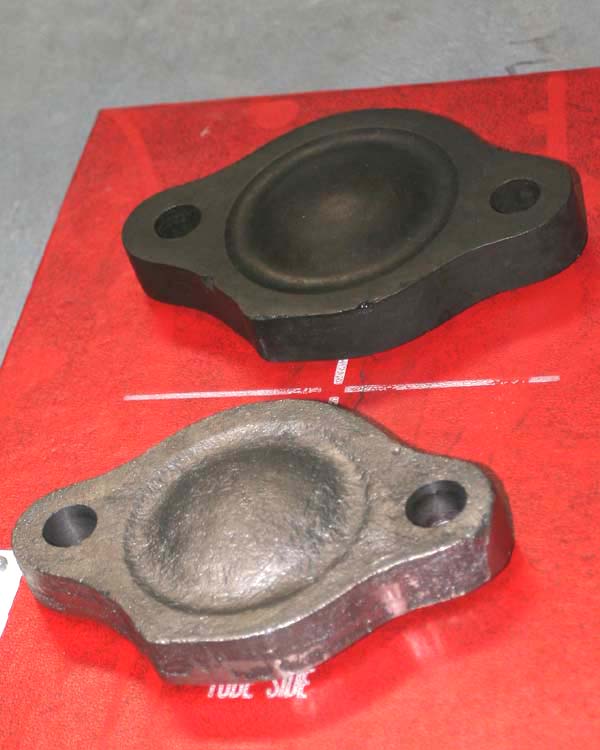Cast iron, like steel and wrought iron, is an alloy consisting primarily of iron and carbon but has a carbon content usually in the range of 2- 4%, which appears as flakes of graphite intermixed within the material. Commonly, when cast iron is submerged in a marine environment, the iron component corrodes away, leaving behind the graphite along with iron corrosion products. Iron in this state is often referred to as ‘graphitized’. Fortunately, even though the iron has corroded away, the shapes of cast iron objects recovered from marine sites often remain intact due to the surviving graphite holding the iron corrosion products in situ.
To help illustrate the difference between non-corroded cast iron and graphitized cast iron, last week we x-rayed the damping piston valve cover next to one of its copies cast at the Buffalo State College Foundry.

In the image, you can see Eric setting the actual object next to the cast copy on top of a
digital x-ray film plate below our x-ray machine.

Detail of the plate with the original artifact on top and the modern cast copy on the bottom.

After the X-ray was taken, the film was removed from the plate and ‘electronically developed’ using our Fuji Digital X-ray system. You can see a recently exposed x-ray going through processing on the screen in the center of the image.

(click on picture to enlarge it)
In this image, one can see the conserved damping piston valve cover on the left and its reproduced counterpart on the right. Areas that appear bright white in the x-ray correspond to actual iron content in the objects. The white color occurs because the metal in those areas is dense enough that the x-rays could not penetrate though leaving the film on the other side unexposed. The lighter grey areas visible in the artifact show graphitized material, which the x-rays could easily pass though. The light gray in the center of the copy occurred because the metal is relatively thin at that point and some x-rays were able to pass through it.
From the x-ray, it can be deduced that a significant amount of metal has been lost from the artifact, so although the object looks structurally sound, it is in fact quite fragile.
Due to fragile nature of graphitized cast iron, conservation treatments of cast iron objects recovered from the Monitor’s wreck site can be delicate and time costuming, so keep checking back to the blog as we complete treatments of objects from this historic ship!